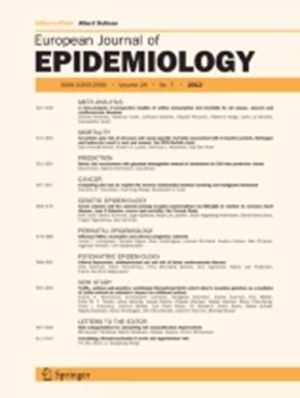确定六个欧洲国家育龄妇女多发性硬化症:来自ConcePTION项目的贡献。
IF 5.9
1区 医学
Q1 PUBLIC, ENVIRONMENTAL & OCCUPATIONAL HEALTH
引用次数: 0
摘要
在过去的几十年里,多发性硬化症(MS)的患病率增加了,主要是在育龄妇女中。文献中描述了几种识别多发性硬化症的算法,提供了异质患病率估计。我们比较了五种识别育龄妇女多发性硬化症的算法,并按时间段和年龄组估计多发性硬化症的患病率。研究人群包括2005年至2019年期间15至49岁的女性,来自三个数据来源,包括所有女性(来自意大利、挪威和威尔士),三个数据来源仅包括孕妇(来自法国、芬兰和西班牙;数据收集于怀孕前后)。测试了五种算法:MS1至MS3合并MS诊断和MS药物处方/配剂,分别需要1、2或3次出现;MS4和MS5只使用多发性硬化症诊断,至少需要2次(MS4只允许1次,如果诊断来自住院治疗)。2015-2019年,基于MS1的MS患病率为每10万名女性109至359人:法国109人,西班牙121人,威尔士195人,芬兰232人,意大利264人,挪威359人。更严格的算法导致了更大的差异,MS3从西班牙的53到挪威的325,MS5从法国的21到挪威的345。所有算法都显示了育龄妇女按时间和年龄的预期流行趋势,尽管低于文献。总体而言,MS1提供的患病率估计与现有文献最接近。这项研究为选择识别育龄妇女和孕妇多发性硬化症的算法提供了关键见解。本文章由计算机程序翻译,如有差异,请以英文原文为准。
Identifying multiple sclerosis in women of childbearing age in six European countries: a contribution from the ConcePTION project.
Prevalence of Multiple Sclerosis (MS) has increased over the last decades, primarily among women of childbearing age. Several algorithms for identifying MS have been described in the literature, providing heterogeneous prevalence estimates. We compared five algorithms to identify MS in women of childbearing age and estimated MS prevalence by time period and age-group. The study population included women aged 15 to 49 years-old between 2005 and 2019, from three data sources including all women (from Italy, Norway, and Wales), and three including pregnant women only (from France, Finland, and Spain; data collected around pregnancy). Five algorithms were tested: MS1 to MS3 combined MS diagnoses and MS-medicine prescriptions/dispensations, requiring 1, 2, or 3 occurrences, respectively; MS4 and MS5 used only MS diagnoses, requiring at least 2 occurrences (MS4 allowed just 1 if diagnosis was from inpatient care). In 2015-2019, MS prevalence based on MS1 ranged from 109 to 359 per 100,000 women: 109 in France, 121 in Spain, 195 in Wales, 232 in Finland, 264 in Italy, and 359 in Norway. More restrictive algorithms led to greater disparity, with MS3 ranging from 53 in Spain to 325 in Norway, and MS5 from 21 in France to 345 in Norway. All algorithms showed expected prevalence trends by time and age among women of childbearing age, though lower than in the literature. Overall, MS1 provided prevalence estimates most closely aligned with existing literature. This study offers key insights into choosing algorithms for identifying MS in women of childbearing age and in pregnant women.
求助全文
通过发布文献求助,成功后即可免费获取论文全文。
去求助
来源期刊

European Journal of Epidemiology
医学-公共卫生、环境卫生与职业卫生
CiteScore
21.40
自引率
1.50%
发文量
109
审稿时长
6-12 weeks
期刊介绍:
The European Journal of Epidemiology, established in 1985, is a peer-reviewed publication that provides a platform for discussions on epidemiology in its broadest sense. It covers various aspects of epidemiologic research and statistical methods. The journal facilitates communication between researchers, educators, and practitioners in epidemiology, including those in clinical and community medicine. Contributions from diverse fields such as public health, preventive medicine, clinical medicine, health economics, and computational biology and data science, in relation to health and disease, are encouraged. While accepting submissions from all over the world, the journal particularly emphasizes European topics relevant to epidemiology. The published articles consist of empirical research findings, developments in methodology, and opinion pieces.
 求助内容:
求助内容: 应助结果提醒方式:
应助结果提醒方式:


